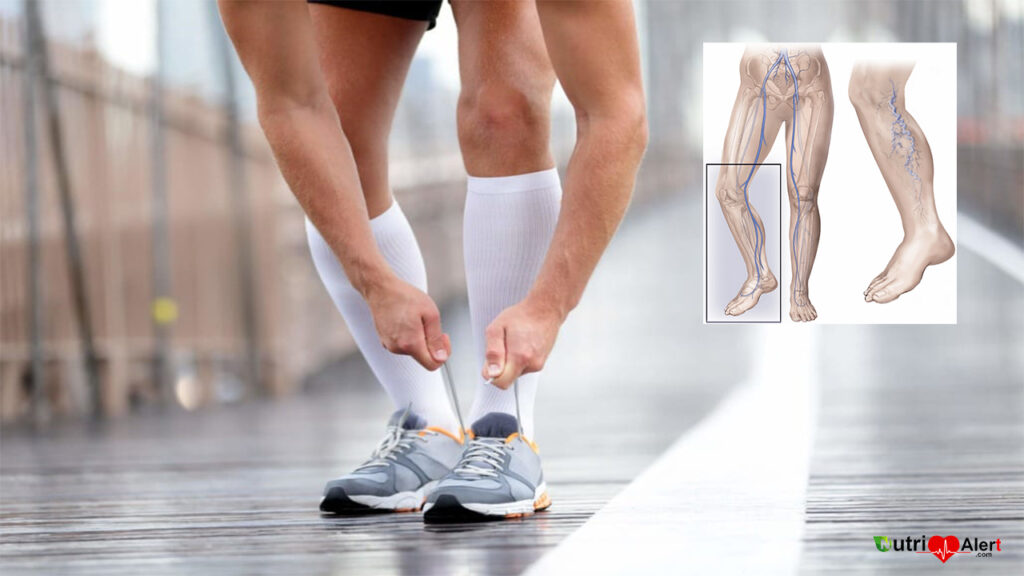Beyond aesthetic issues, varicose veins can cause other issues. They can cause more severe issues and be so unpleasant that surgery may possibly be required. Fortunately, you can improve your appearance and comfort while possibly avoiding surgery by exercising to reduce the appearance and discomfort of varicose veins in your legs.
Foods that affect your Brain and reduce your intelligence | Varicose Veins How To Prevent Naturally
What’s Varicose veins
Usually found in the legs, varicose veins are swollen veins that protrude from the skin. As we age, they grow more prevalent, but pregnancy can also influence how they develop.
As blood circulates throughout our bodies, veins return blood to the heart and lungs. The blood moves against gravity and is stopped from flowing backward by valves. Varicose veins develop when these valves become weak, a disease known as venous insufficiency. This condition is typically caused by general wear and tear over time. Blood can pool in the veins, causing them to bulge and rise closer to the surface.

In addition to making your skin sag, varicose veins are rope-like, blue or red, and can even be visible. According to the Office on Women’s Health, they occur most frequently on the thighs, inside of the leg, and the back and front of the calves.
The three forms include telangiectasia varicose veins, reticular varicose veins, which are red and clustered closely together in a network, and trunk varicose veins, which are thick and knobbly (thread or spider veins: small clusters, can appear on our face and legs). Varicose veins affect women more frequently than males because, according to study, female hormones relax the walls of veins, increasing the risk of valve leakage.
Best Exercises to Reduce Varicose Vein Symptoms
Walking
Spend at least 30 minutes each day walking. You can divide this up into parts and complete it throughout the day if necessary.
Climbing stairs
When possible, take the stairs rather than the escalator or elevator. Leg muscles are contracted while you climb, which aids in forcing blood back up your legs.
Calf raises
The blood in your lower legs is also moved as you lift your heels off the ground using your calf muscles. This exercise can be performed standing up or sitting down several times throughout the day. Aim to complete 10 to 15 sets of calf lifts at once.
Toe flexes
Your feet and toes can frequently swell if you stand or sit still for the majority of the day. Some of the pressure can be relieved by flexing and stretching the toes. Stretch your legs out away from you as you lay down on the ground. 20 times per leg, flex your toes in the forward and backward directions.
Stretching
Vein health is improved by moving your body, being more flexible, and contracting and relaxing your muscles. Lunges, lying on your back with your legs raised above your head and resting on a wall, as well as a standard forward fold, where you bend over from the hips and reach the crown of your head toward the ground while keeping your knees bent if necessary, are specific stretches that are known to help with venous insufficiency.
Yoga
Yoga improves the body’s strength and flexibility, which can lessen the pain and swelling brought on by varicose veins. Additionally, it might help you stay flexible and strong as you age.
Along with easing varicose vein symptoms, exercise can improve your general health. It can improve the long-term health of your veins and might even stop the development of varicose veins in the future. But if exercise isn’t helping with your symptoms, then go for Available Treatments to stop the development of varicose veins in the future.
Treatments Available for Varicose Veins
Sclerotherapy
The ideal candidates for this conventional therapy are minor varicose veins. A drug is injected by the doctor, causing the vein to swell shut. The vein consequently disappears after a few weeks.
Closure mechanism
This can be the best course of action for you if your varicose vein is just below the skin’s surface. To seal the vein, we take a piece of adhesive material and implant it there. After that, blood flow resumes to normal.

